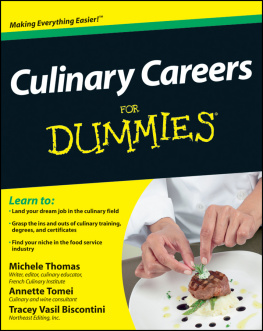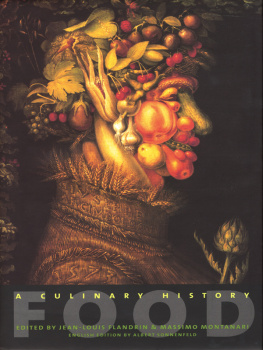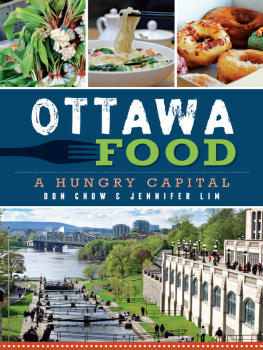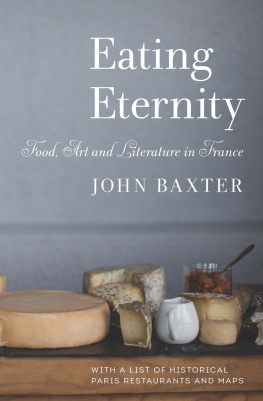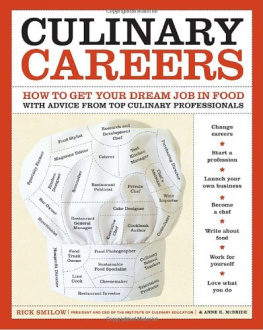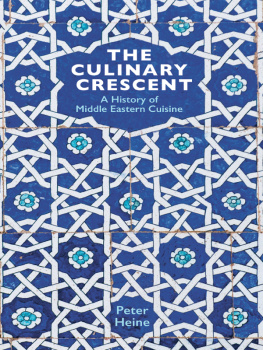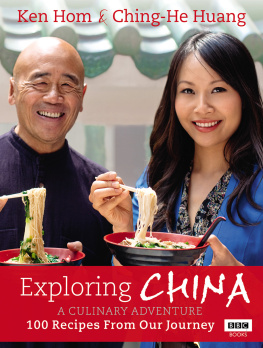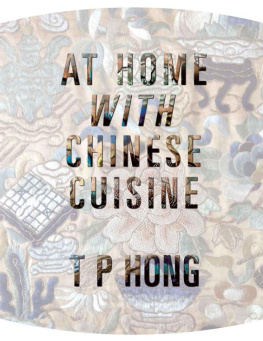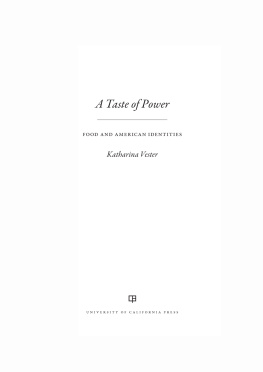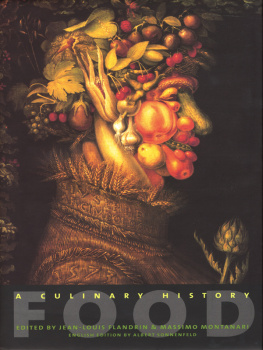Culinary Capital
Culinary Capital
Peter Naccarato and Kathleen LeBesco
London New York
English edition
First published in 2012 by
Berg
Editorial offices:
50 Bedford Square, London WC1B 3DP, UK
175 Fifth Avenue, New York, NY 10010, USA
Peter Naccarato & Kathleen LeBesco 2012
All rights reserved.
No part of this publication may be reproduced in any form
or by any means without the written permission of Berg.
Berg is an imprint of Bloomsbury Publishing Plc.
Library of Congress Cataloging-in-PublicationData
Naccarato, Peter, 1970Culinary capital / Peter Naccarato and Kathleen LeBesco. English ed.
p. cm.
Includes bibliographical references and index.
ISBN 978-0-85785-415-5 (alk. paper) ISBN 978-0-85785-382-0 (alk. paper) ISBN 978-0-85785-383-7 (alk. paper) 1. Food Cross-cultural studies. 2. Food habits Cross-cultural studies. 3. Food consumption Cross-cultural studies. I. LeBesco, Kathleen, 1970 II. Title.
GT2850.N34 2012
394.12dc23
2012017458
British Library Cataloguing-in-PublicationData
A catalogue record for this book is available from the British Library.
ISBN 978 0 85785 382 0 (Cloth)
978 0 85785 383 7 (Paper)
e-ISBN 978 0 85785 415 5 (individual)
www.bergpublishers.com
While we eat to satisfy hunger and nourish our
bodies, some of the most radical effects occur
precisely when food is dissociated from eating
and eating from nourishment.
Barbara Kirshenblatt-Gimblett, Playing to the Senses:
Food as a Performance Medium
Contents
We would like to thank a number of colleagues, students, and friends for their help in shaping this work. At Marymount Manhattan College, we appreciate the support of Dean David Podell and the late Margaret Sokol for funding for the research phase of this book. At New York University, the resources provided by the Faculty Resource Network (led by Debra Szybinski and Anne Ward) were also invaluable for research. Students in our Spring 2009 and Spring 2011 sections of Edible Ideologies: The Politics of Food engaged us in discussions and pushed our thinking further about the interaction of foodways and social status. Attendees at the conferences of the National Communication Association, the Association for the Study of Food and Society, and at Crossing Borders III provided excellent feedback as we presented earlier versions of several chapters. We also appreciate thoughtful and engaged commentary provided by Kathleen Collins, Fabio Parasecoli, and several anonymous reviewers. We are grateful to the team at Berg, particularly our editor Louise Butler, for their wisdom and an efficient, nearly painless production process.
Additionally, Katie would like to thank John Shields, whose tireless and loving parenting bought her much time to write, and Molly Shields, born somewhere between the first and last drafts of this manuscript, for the simple commands (Computer stop! Work done!) that pulled her back into the world.
Peter would like to thank his colleagues at Marymount for granting him the senior fellowship leave that allowed him to focus on writing, the many friends with whom he has discussed food and shared memorable meals, Anthony Naccarato, for providing us with VIP access to Wing Bowl 2010 and to the WIP Morning Show, and his parents, Pete and Laura Naccarato, for their continued support.
Consider the following hypothetical tableau.
In Brighton, United Kingdom, Jane Smith ends her nine-hour work day. On her way home to her family, she stops by her local meal prep franchise and whips up chicken cacciatore. She jumps in her car, finishes the drive home, barrels into the kitchen, and opens the fridge, which is stocked with fresh fruits and vegetables that she received the night before from her online grocer. She throws together a salad, plates it with the chicken, and calls her family in to a delicious homemade meal as she beams with pride.
Meanwhile, in Tampa, Florida, Jos and Jennifer Santos fight for control of the remote as they flop on the couch. The compromise: he gets to watch one episode of Iron Chef while she gets to watch one episode of Barefoot Contessa. Later that evening, as they peruse the dessert menu at the upscale restaurant theyve selected for dinner, Jennifer cant resist pointing out to Jos that she recognizes the mixed berry pavlova as one of Ina Gartens favorite desserts. Jos fires back with half a dozen ways to prepare mixed berries, remembering that they were the secret ingredient on Iron Chef. Toucha culinary draw.
Later that evening, Jeff Liu, aka JeffEats, hovers over his keyboard, furiously typing his review of his pilgrimage to the best dumpling shop in Vancouvers Chinatown. He launches his latest salvo in his ongoing battle with DumplingQueenBC over where one can find the best dumplings in the city. Satisfied with his argument that the most obscure food is the most authentic, he sits back and hits send.
The next day, Randy Rogers returns home to Topeka, having just triumphed in a three-state smores eating contest. With trophy in hand, he welcomes the accolades of his family, who await him with colorful hand-drawn signs cheering his victory. His neighbor, Jefferson Pettengill, asks him for an interview, which hell post on his junk food blog. He also tells him about an upcoming eating contestdeep-fried Twinkies!that will be held at next months Kansas State Fair.
There is something in each of these scenes to suggest that certain food practices give people a sense of distinction within their communities, and that distinction is not based simply on how expensive things are. To make sense of food as an economic and cultural commodity, to demonstrate how a societys food practices function to circulate and challenge prevailing values and ideologies, and to understand how this is connected to the work of creating and sustaining a sense of Self, we turn to this books organizing concept: culinary capital.
* * *
The concept of culinary capital owes a large debt to French sociologist, anthropologist, and philosopher Pierre Bourdieu, who builds upon Karl Marxs work on economic capital to understand how multiple forms of capitaleconomic, cultural, social, and symboliccirculate across the social field. Bourdieu argues that by accessing these multiple forms of capital, individuals acquire status and power. To understand how this happens, Bourdieu focuses on practice, which he sees as knit(ting) together structure and action, meaning and material conditions (Calhoun and Sennett 2007, 7). Following Bourdieus example, we focus particularly on how individuals food practices are implicated in this process through the circulation of culinary capital.
Like Bourdieu, we recognize that food and food practices play a unique role as markers of social status. However, rather than presuming an inherent value stable within some culinary experiences or food products themselves and a lack of inherent value in others, we follow Bourdieu in attending to the processes through which such value is assigned and reassigned to a range of foods and food practices on a continuous and ever-changing basis. In other words, rather than assuming that culinary capital circulates in a fixed and predictable pattern (for instance, that certain foods or food practices always confer culinary capital while others do not), we focus on the multiple and potentially contradictory ways in which it may function. For example, Food Network celebrity chef Paula Deens revelation that she has been diagnosed with diabetes has touched off debates about the recipes and foods that she promotes on her very popular programs and in her very successful cookbooks. Is it irresponsible for her to celebrate butter and other fatty foods given the potential health risks associated with them? Would the answer to this question be different if Deen were a high-end pastry chef in one of New York Citys top restaurants rather than a popular media personality promoting Southern, down-home cuisine? Would the French-trained pastry chef earn culinary capital as she prepared butter-laden desserts for her restaurants high-class clientele who relax their typical restraint in order to enjoy them, while Deen is criticized for peddling such rich foods to her presumably helpless fans? And how do different consumers use each of these types of food to position themselves in fields of status? It is the potentially conflicting answers to these types of questions that suggest the complex factors that determine how culinary capital circulates across the social landscape. At the same time, this multiplicity is exacerbated further by the need to recognize culinary capital as only one means by which individuals may construct their social identities. Thus, our goal is not to isolate culinary capital from the multidimensional social space, but rather to understand how it circulates across this cultural landscape and how it interacts with any number of prevailing values and ideologies.


